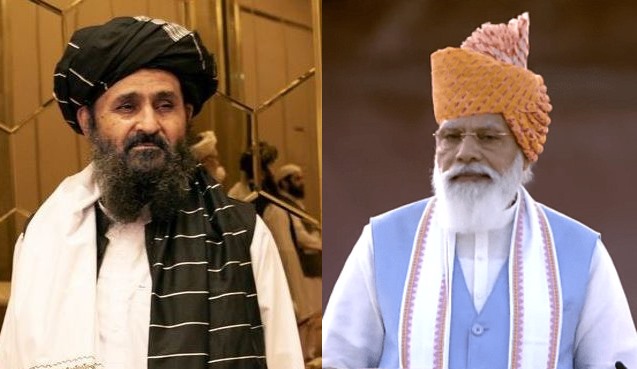The turbocharged takeover of Afghanistan by the Taliban within days after the US forces exited the country after two decades of waging a controversial war in the aftermath of the 9/11 attacks has confounded diplomats, foreign affairs experts and the security and intelligence establishments. The swift takeover by the Taliban, which refers to it as the Islamic Emirate of Afghanistan, has led to nations across the world scurrying to evacuate their diplomats from Afghanistan and to re-evaluate their relationship with Afghanistan under its new leadership.
But even as social media channels are abuzz with chuckle-evoking video clips such as the one of Taliban members romping about the gym at the Presidential palace in Kabul, which the Afghan president Ashraf Ghani fled, there is a sobre aspect of what the US military’s exit and the Taliban’s ascension to power means for India.
As the Taliban wrests control of Afghanistan, the consequences for South Asia, particularly the Indian subcontinent, will likely be significant. India’s relationship with its immediate neighbours–Pakistan and China–have for decades been fraught with risks and apprehension. In the best of times, India’s relationships with these neighbours have been testy.
Pakistan’s borders with Afghanistan are sieve-like. Taliban militants, and those of the al-Qaida have frequently sought refuge in the northern part of Pakistan.And, as we know, the US sought Pakistan’s help to track down and kill Osama Bin Laden by raiding his hideout in Pakistan. The latter has always had an active role to play in the affairs of Afghanistan, with or without the help of the US. China, on the other hand, has been showing greater interest in the country of late. In July, the Chinese foreign minister had meetings with the Talibanjust before the US formally began its disengagement.
How would the roles that its two neighbours play in Afghanistan affect India? One theory is that Pakistan could now have a greater influence over the Taliban-led government in Kabul. Under Ashraf Ghani, Islamabad’s relations with Kabul had softened and this had perceptibly weakened Pakistan’s clout in the region. Many believe with the Taliban back in the driver’s seat, the new government in Afghanistan could reach out to Pakistan and the latter could, therefore, increase its say in the governance of the country. This could also mean that militants in the region could take advantage of the lax borders between the two countries and easily move closer to Pakistan’s borders with India.
The other area of concern for India could be China’s ostensible desire to play a bigger role in the region, particularly in keeping with its plans for the Belt and Road Initiative, which is a global infrastructure development strategy adopted by the Chinese government in 2013 to invest in nearly 70 countries and international organisations. Meanwhile, Russia, which once propped up a Communist government in Afghanistan and fought a war there for nine years,is one of the only countries that has not been alarmed by the Taliban’s ascension to power. It has decided to keep its embassy manned and has, in fact, lauded the Taliban. One view that some analysts have is that in the aftermath of the Taliban takeover of Afghanistan, Pakistan, Russia, China and Iran could increase their roles in the region, something that India is understandably apprehensive about.
While New Delhi evaluates its moves with regard to the changes in Afghanistan, it will be interesting in the coming weeks and months to see how the geo-political dynamics move in the region.
Is Modi Losing his popularity?
If two national surveys in India last week are to be believed, Prime Minister Narendra Modi’s popularity could be waning. According to India Today’s Mood of the Nation survey, only 24% of respondents said he was best suited to be Prime Minister. Six months ago, it was 38% and a year ago 66%.
Likewise, another poll, the YouGov-Mint–CPR Millennial survey, showed that 46% of respondents think that there is a need for a new political leadership in India. And another 53% of people surveyed agreed with the statement that the people they “interact with are very upset with PM Modi’s leadership in the past few months”, while 42% agreed with the statement that “Modi was responsible for the healthcare disaster that followed the second wave of the pandemic”.
According to the India Today survey, Uttar Pradesh Chief Minister Yogi Adityanath came in second as the person best suited to be prime minister — 11 per cent of those surveyed rooted for him. He was followed by Rahul Gandhi (10%); and the chief ministers of West Bengal and Delhi, Mamata Banerjee and Arvind Kejriwal, respectively (both had 8% each of the respondents opting for them).
While Modi with 24% remained as the prime choice, his previously unassailable popularity has come under severe pressure–partly due to the impact of the pandemic but also because of slowdown in the economy, rising inflation, and growing unemployment, all of which have seen people’s livelihoods affected adversely and also pushed millions back into poverty.
Some columnists, particularly the pro-government sort, have predictably disputed the survey findings and nitpicked some of the figures and percentages. It is, however, quite likely that Mr Modi has suffered a setback in the aftermath of the pandemic. India’s vaccination rate at 9.3% (fully vaccinated) has been low and lack of availability and inadequate infrastructure have wreaked havoc with its vaccination programme, which is marked by inconsistencies. Its economy has also failed to pick up. So, while opinion polls have their shortcomings and are never very accurate, the straws in the wind that they point to in terms of Mr Modi’s support from his countrymen should be a cause of concern for him and his party as the 2024 parliamentary elections come closer.
